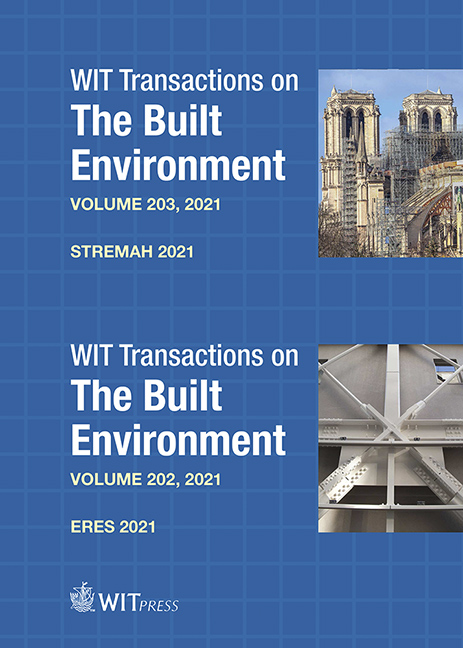DIGITAL SURVEY AND PARAMETRIC 3D MODELLING FOR THE VULNERABILITY ASSESSMENT OF MASONRY HERITAGE: THE BASILICA OF SAN DOMENICO IN SIENA, ITALY
Price
Free (open access)
Transaction
Volume
203
Pages
12
Page Range
173 - 184
Published
2021
Size
2,647 kb
Paper DOI
10.2495/STR210151
Copyright
Author(s)
ANGELO MASSAFRA, CARLO COSTANTINO, DAVIDE PRATI, GIORGIA PREDARI, RICCARDO GULLI
Abstract
This research focuses on the combined use of digital survey tools and parametric 3D modelling procedures for supporting the vulnerability analysis of masonry heritage. The behaviour of masonry structures is strongly related to the geometrical properties of macro-elements, their connections, and material characteristics. The collapse of these buildings occurs mainly due to the loss of equilibrium of the macro-elements than the breaking of the materials. Moreover, the numerical computing of structural element stresses requires an in-depth knowledge of material properties that could be reached mainly through destructive tests, which have high costs and could damage the architectural figurativeness of protected buildings. Besides, many tests are required because of the high variability of mechanical properties within an ancient masonry building due to the various transformations and construction techniques that usually characterise its construction history. A quick and non-destructive approach is proposed as a preliminary support tool. It is based on the observation of high-resolution unmanned aerial vehicles (UAV) orthophotos combined with terrestrial laser scanning (TLS) point cloud geometric information analysis through visual programming generative algorithms. The case study is the Basilica of San Domenico, one of the most important churches in Siena, Italy, built in the 13th century, completed in the 15th century, and repeatedly modified until the beginning of the 20th century. The Basilica has construction features (the large volume without side chapels and high slenderness) that make it particularly vulnerable to horizontal actions. These inherent vulnerabilities were joined by the effects of an earthquake in 1798, whose damages were partially remedied. The workflow application allowed highlighting the hypothetical displacements that the transept and the bell tower have undergone over time, improving their behaviour comprehension. It also helped to point out the critical issues of the whole building, supporting the vulnerability analyses based on the macro-elements and orienting the intervention hypothesis for its preservation.
Keywords
cultural heritage, Basilica of San Domenico in Siena, masonry structures, terrestrial laser scanning, UAV photogrammetry, generative algorithms, parametric 3D modelling, structural systems reverse engine




